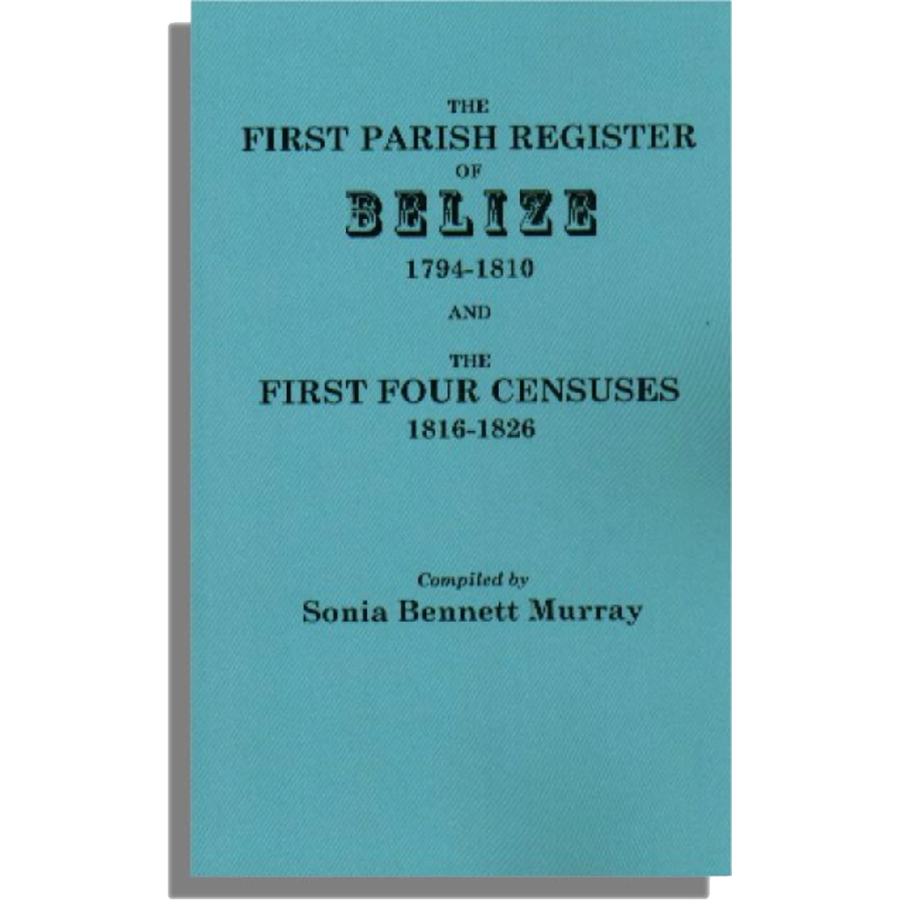The First Parish Register of Belize, 1794-1810, and the First Four Censuses, 1816-1826
Couldn't load pickup availability
Like most of Central America, Belize was originally the home to Mayan Indians. Occupied by Spain in the 16th century but relegated to a backwater status in its Empire, Belize fell under British control in the 1700s. Most of its 18th-century settlers came from Scotland, England, or Ireland, or were slaves imported from Africa. Belize's sea trade was extensive, so New Providence and other U.S. ports, as well as those in the West Indies, are mentioned in the records. Moreover, a number of Loyalists who fled the Carolinas at the end of the American Revolution settled in Belize (including Capt. James D. Yarborough, who gave the land for Yarborough Cemetery). Belize became an independent nation in 1981.
This volume is a collection of some of the earliest British genealogical records known to survive for this nation. Compiled by Ms. Sonia Murray from originals at the Belize National Archives in Belmopan, the volume contains transcriptions of the oldest extant parish register (1794-1810) for Belize and four of its oldest censuses.
The First Parish Register of St. John's Church (1794-1810) contains records of birth, marriage, baptism, and death. The baptisms, for example, give the name of the infant; the date of, or age at, baptism; the names of parents; and, frequently, the names of grandparents. Death records identify the decedent by date and occupation, and occasionally by next of kin. Slaves or free blacks are usually so designated in all record categories. Owing to Belize's large Scottish influence, naming practices were influenced by the patronymic custom. In these cases women retained their maiden surnames throughout their lives, regardless of marital status. As the author points out, "this is a blessing to genealogists, identifying women at a time and place in which many people died young, and quick remarriage was the rule."
The four censuses transcribed for the book (the household censuses of 1816, 1823 and 1826, as well as the slave census of 1820) convey a clear sense of the ethnic makeup of Belize society. Heads of household and slave masters, for example, are identified as white, colored, or free black. "Coloured" refers to free Amerindians and people of mixed race (white/Indian, black/Indian, white/black, or white/black/Indian). Slaves could be black, mulatto, mixed race, or Amerindians or their descendants who had been slaves on the Mosquito Shore before 1776. Although head of household information is the most detailed in each census, we are given the name of every other person living in each household as well.
This fully indexed work identifies thousands of 18th- and early 19th-century inhabitants of Belize never before accessible to researchers.
Sonia Bennett Murray
2010, paper, 310 pp.
ISBN: 9780806354828
102-9024
